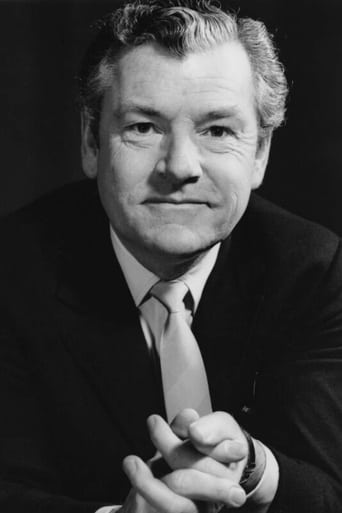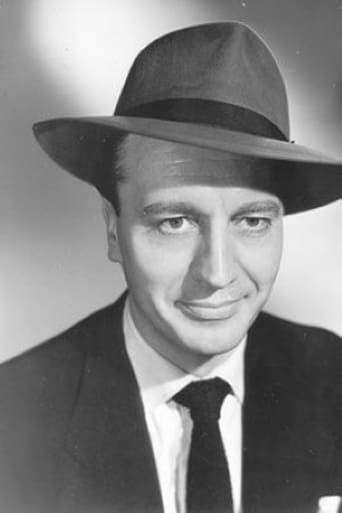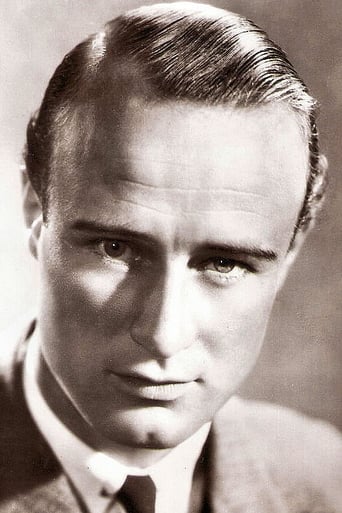ChanFamous
I wanted to like it more than I actually did... But much of the humor totally escaped me and I walked out only mildly impressed.
InformationRap
This is one of the few movies I've ever seen where the whole audience broke into spontaneous, loud applause a third of the way in.
Keeley Coleman
The thing I enjoyed most about the film is the fact that it doesn't shy away from being a super-sized-cliche;
Kien Navarro
Exactly the movie you think it is, but not the movie you want it to be.
runamokprods
A far more definitive, if slightly less emotional re-telling of the sinking of the Titanic than the huge James Cameron version.Obviously the special effects are several generations behind those in the new film, and there's very little character development. The film, focuses instead on an almost documentary like overview. But that approach feels both more telling and more real. Also, some of the most dramatic and tragic parts of the real story -(spoiler ahead)like the presence of a boat a mere 10 miles away that simply didn't understand what was happening to their neighbor at sea - are included here and not in the recent version. It has really stuck with me.
Woodyanders
The luxury cruise ship the Titanic sinks after hitting an iceberg during its maiden voyage. Director Roy Ward Baker and screenwriter Eric Ambler wisely eschew cheap sentiment and overblown melodramatic flourishes in favor of a more admirably subtle and restrained documentary-style sense of realism and authenticity that just the same still astutely captures the heart-wrenching tragedy of the catastrophic event. Indeed, there are many poignant and striking moments throughout: The rich lady who refuses to leave without her lucky china pig, a father saying a final goodbye to his wife and children, Benjamin Guggenheim (a marvelously smooth performance by Harold Goldblatt) deciding not to wear a life jacket so he can die as a gentleman, the band playing right til the bitter end, Ida Strauss insisting on staying aboard with her beloved husband, the brave crew doing whatever they can to mitigate the severity of the situation, and an old waiter attempting to comfort an abandoned child in the worst possible crisis. While Kenneth More clearly holds the entire epic picture together with his outstanding portrayal of the stalwart and fiercely efficient Second Officer Charles Lightoller, he nonetheless receives sterling support from Laurence Naismith as the resolute Captain Edward John Smith, Frank Lawton as the cowardly J. Bruce Ismay, Michael Goodlife as proud and pragmatic designer Thomas Andrews, Tucker McGuire as the boisterous Margaret "Molly" Brown, George Rose as the drunken baker Charles Joughin, and David McCallum and Kenneth Griffith as a couple of exceptionally selfless and dedicated wireless officers. However, it's the artful way this film combines a feeling of epic scope and basic human drama without one overwhelming the other that stands out as the key reason it's widely hailed as the definitive motion picture about the sinking of the supposedly unsinkable Titanic. Essential viewing.
Nick Duretta
Let me just say that I loved James Cameron's "Titanic," which took a huge historic disaster and turned it into a compelling film that went beyond the sensational. Yes, it was a populist film (who can argue with its record-setting box office?), but a damn good one. That being said, I enjoyed "A Night to Remember" immensely. It doesn't have the lover's story contrived for the Cameron film as its anchor, but I was still captivated by the ticking bomb of the "unsinkable" ship approaching its demise, with some rising to a heroic level and others resigning themselves to fate, or simply refusing to admit reality. And I was blown away by the special effects, expecting them to be primitive in an old-school kind of way. Yes, there were models, but their impact was every bit (if not more) of that of the Cameron film. This was truly a remarkable accomplishment.
Matthew Kresal
The sinking of the Titanic on its maiden voyage in April 1912 has been the subject of many books and films. Perhaps no book or film is better than Walter Lord's 1955 book A Night To Remember and this, its 1958 film adaptation. Given the reputation of its source material, how does the film hold up? The strength of the film is ultimately the same as that of Lord's book. Following the opening minutes of the film which are set prior to when the ship sets sail and introduces us to second officer Charles Lightoller (played by Kenneth More), Eric Ambler's script focuses on just about a dozen hours of the Titanic's story: namely the events from 11:40 PM on April 14th through about the same hour the following morning. The film effortlessly wanders around both the Titanic herself and the people aboard her. We see the Titanic story from a large number of perspectives including officer Lightoller as well as groups of passengers from all three classes from a millionaire couple, middle class newlyweds and a group of Irish immigrants. The film occasionally moves away from the Titanic to two ships that also play big parts in events: the eventual rescue ship Carpathia and the Californian (the infamous ship that stood still which stands at the center of a controversy that the film helped to reawaken( and those aboard those respective vessels.As a result, the film features a large cast. The aforementioned Kenneth More effectively leads it and he does extremely well in the role bringing a sense of both authority and humanity to his performance though it's worth noting that some of the actions and events he is depicted as taking part in didn't necessarily happen to the real man on that April night. Yet with the exception of More, there are no stars in roles (though several of the actors would go on to greater fame in the years ahead) with More's Lightoller being literally just one part in a large cast of actors and actresses who bring history to life ranging from Laurence Naismith as Captain Smith and Michael Goodliffe as the ship's designer Thomas Andrews to Honor Blackman as a first class passenger along with Anthony Bushell and Russell Napier as the respective captains of the Carpathia and Californian amongst many, many others. In doing so the filmmakers created a fascinating human drama played out for the most part on an 882 foot stage filled with people from all walk's of life.The film also succeeds for the fact that it stays true to events, or at least to events as they were known in the late 1950s, and not sensationalizing events. Unlike other depictions of the Titanic both on film and on television, there are no fictional characters or love stories taking center stage. The Titanic and those aboard it caught up in events are the stars of the film. The film features some excellent recreations of areas on the real ship that stand up well even against those from the James Cameron film wile both the direction of Roy Ward Baker and the black and white cinematography of Geoffrey Unsworth playing up the drama of the events of that night rather than attempting to enhance them cinematic. Even the score from William Alwyn, sporadic as it is, isn't intrusive or loud but subtly underscores the events taking place. While the film does have deviations and historical errors (of which Titanic researcher Paul Lee has compiled on his website for those who are interested), the film remains the most accurate Titanic film yet made.Where perhaps the film is let down is in its special effects. Some of the model footage hasn't aged well at all with some of the shots during the sinking featuring an obvious Titanic model with even more obvious lifeboat models. Other times the superimposing of those in the lifeboats in front of those shots leads to results that are at best mixed and poor in others. That said, the sequence of the Titanic taking its final plunge remains a fantastic combination of special effects with other elements to create a haunting and memorable sequence (even without the ship breaking apart as it was later confirmed to have done more than a quarter of a century after the film was made).Like the book its based on, the film if A Night To Remember succeeds by giving the viewer the facts of the event and the incredible human drama that played out on an 882 foot stage in the middle of the North Atlantic. It also remains after more than half a century the definitive film depiction of the Titanic disaster for that same reason. Chances are, it will stay that way and is a film to remember as a result.






